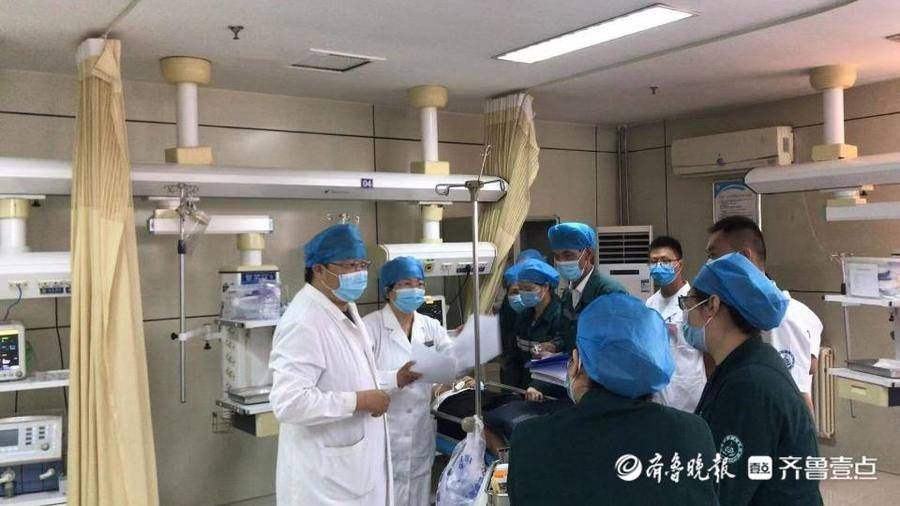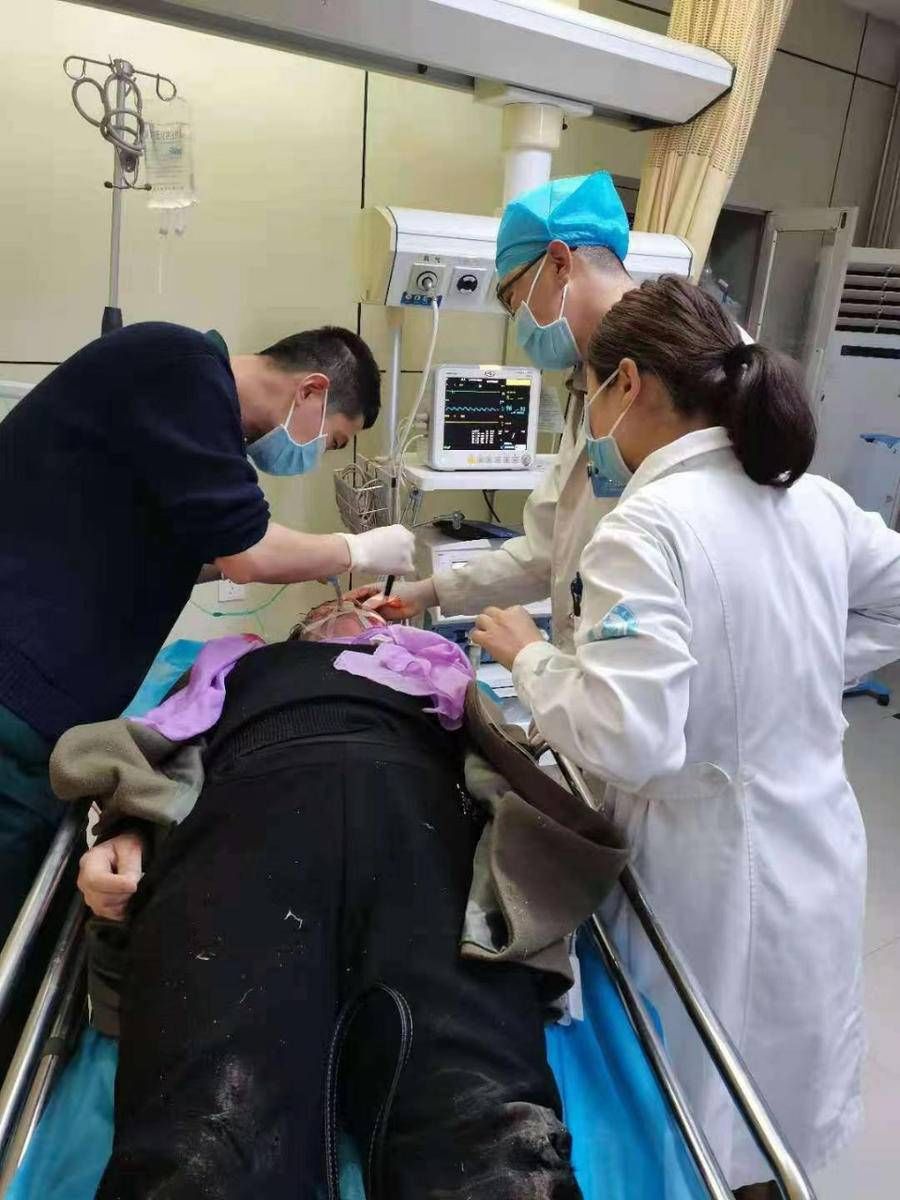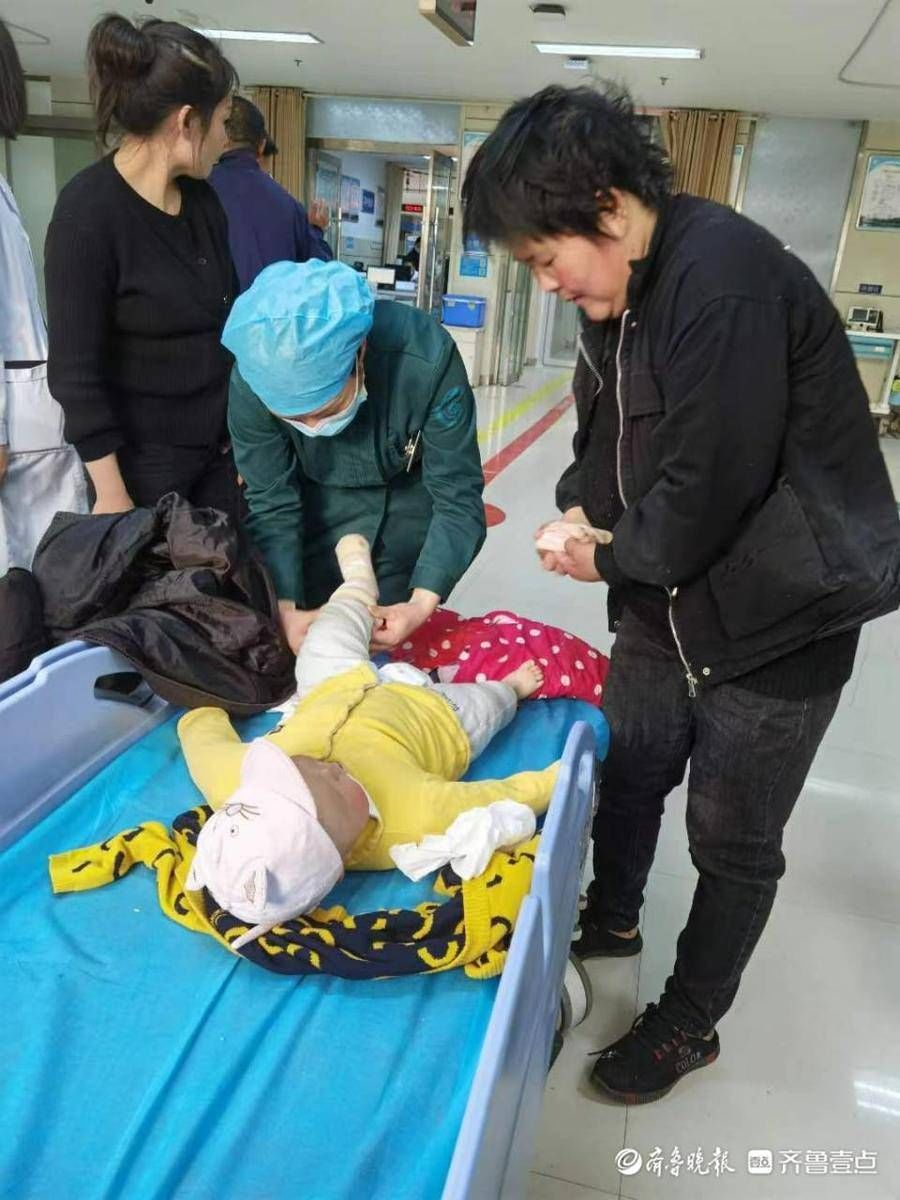Qilu Evening News Qilu One Point reporter Ma Xueting
April 5th is a holiday, everyone recharges their energy to start the next day’s work. As night fell, the emergency department of Heze Municipal Hospital was busy as always. “Please excuse me, the patient has heart failure and myocardial infarction, go to the emergency department quickly.” “The patient who is suspected of aortic dissection is about to be transferred to another hospital, please be prepared!” “Doctor, I accidentally got burned, what should I do!” “120 The ambulance will arrive soon, get ready to pick it up!”… Every time the wheels of the rescue bed touched the ground, the emergency sounded in the emergency hall, the whistle of the ambulance, the hurried footsteps of doctors and nurses, the pained groans of patients, various The sound of all kinds of ambulance equipment means that a race against time is about to start.

Around 1:00 a.m. on April 6, a patient was admitted to the emergency department by a flat car. The doctor found that he was sweating profusely and his back was soaked. Clothes and a stretcher cart, clammy limbs, and nausea and vomiting. Experienced emergency room doctors judged: Although the patient’s vital signs are normal, combined with all symptoms, the situation is very critical and life-threatening at any time, and the cause must be identified in time.

The patient stated that after 12 hours of “massage” treatment, the right upper limb was swollen and restricted in movement. Zhang Yousheng quickly contacted the Department of Endocrinology and the Chest Pain Center for an emergency consultation to screen for high-risk chest pain, and there was no problem. Due to the swelling and numbness of the patient’s right upper limb, he was worried about vascular embolism. The B-ultrasound found that the patient’s blood vessels were normal, but the subcutaneous soft tissue of the right upper limb was widely swollen, and the fascia tissue was closely related. Considering that it was necrotizing fasciitis, the attending doctor of emergency surgery Teacher Li Chong and Jiang Lima contacted the Department of Trauma Surgery and Critical Care Medicine for emergency consultation. Through multidisciplinary joint diagnosis and treatment, the patient was initially judged to be necrotizing fasciitis, perfringens sepsis, and sepsis. For further diagnosis and treatment, he was transferred to the first ward of intensive medicine at 3:00 in the morning.
In the most critical departments of the hospital, patients do not come one after another. Sometimes multiple patients need to be treated at the same time. Sometimes the vital signs of the patients being rescued are not stable, and new patients arrive…
The pace of work is fast, everyone is busy but orderly. The emergency department is just a transfer station. It requires doctors to quickly judge the condition and start rescue immediately, so as to gain more hope for patients and save more time for doctors.

“Not good! 4-bed patient developed ventricular fibrillation!” “Establish venous access, perform chest compressions, and prepare for defibrillation!” Lying on the pillow, unbuttoning the clothes, turning on the defibrillator, applying conductive paste once or twice, the patient regained consciousness and the heart rate improved briefly. The biggest feature of the emergency department is unpredictability. You never know what the symptoms of the next patient will be or the changes in the condition of the next second.
On the last night of the holiday, with a 15-hour night shift, the medical staff raced against time to pull patients back from death. The mental stress is high, the physical strength is overloaded, and the degree of exhaustion can be imagined, but on their faces, patients and their families can still see the light of day.

There is one place that is always brightly lit, and that is the emergency department; there is a group of people who are always desperate, and that is the emergency department. 24 hours of life protection, 365 days of post, the emergency department of Heze Municipal Hospital, day after day, year after year, practice “people first, life first” with practical actions. “Even if the patient has no documents, no family members, and no money, as long as his life is saved, nothing else matters,” said Zhao Yan, director of the emergency department.